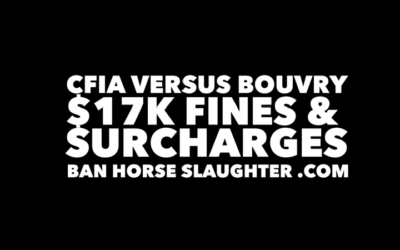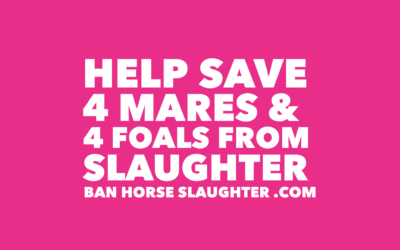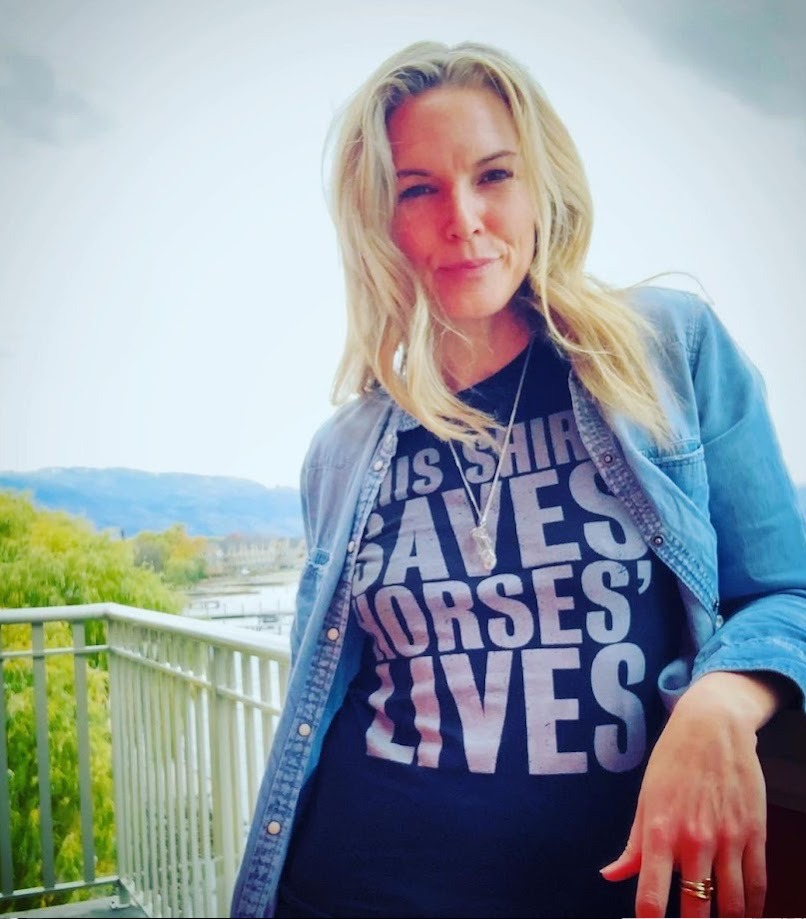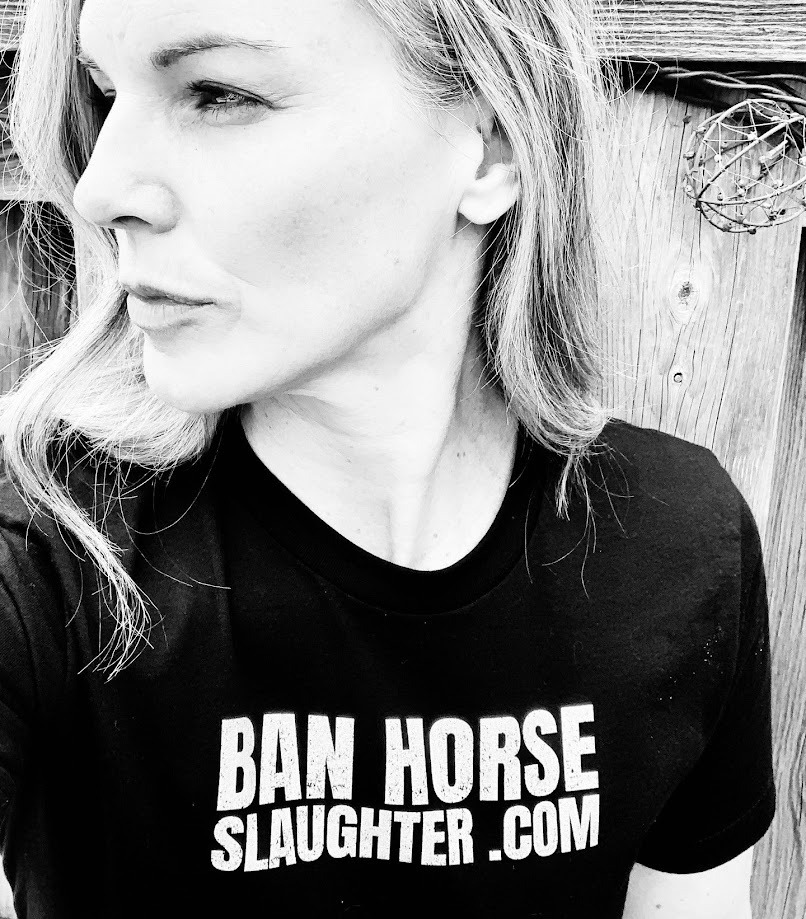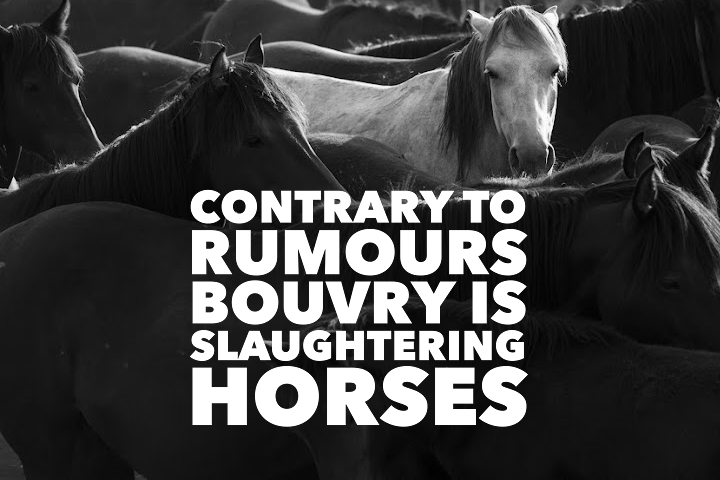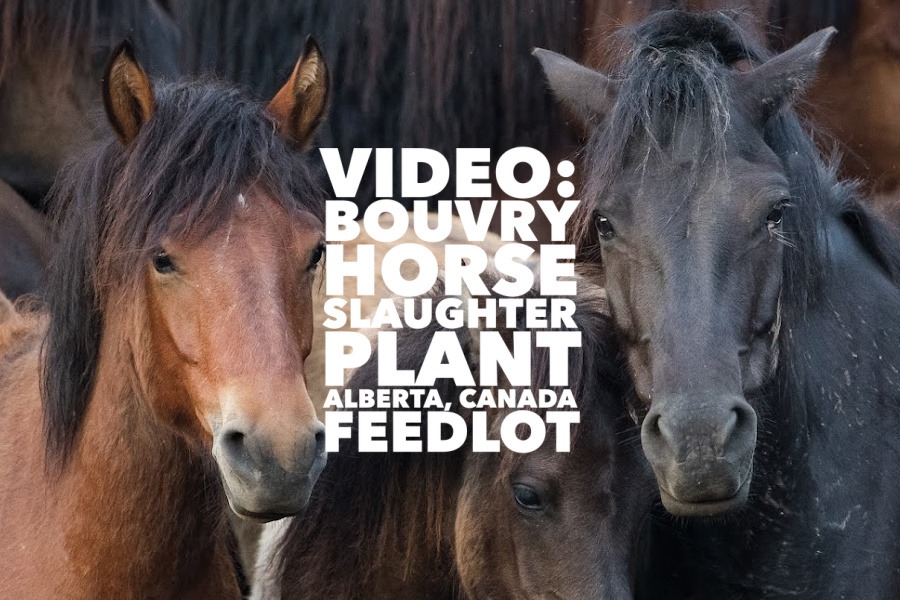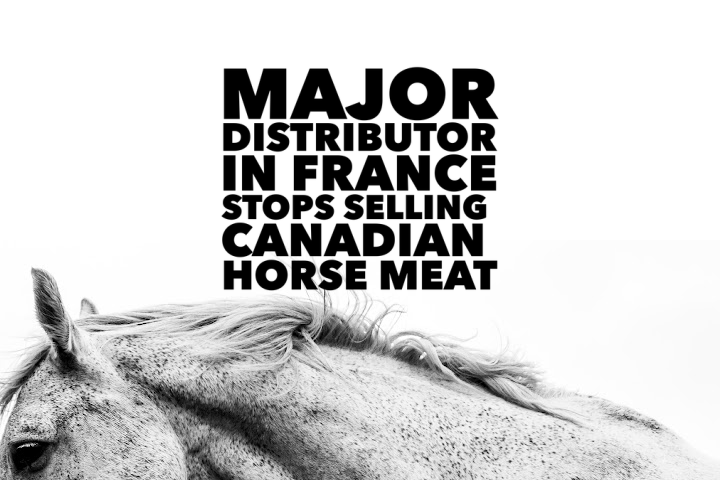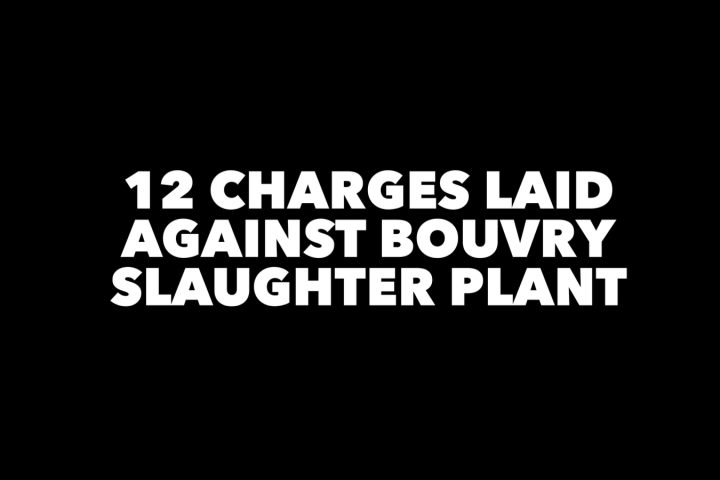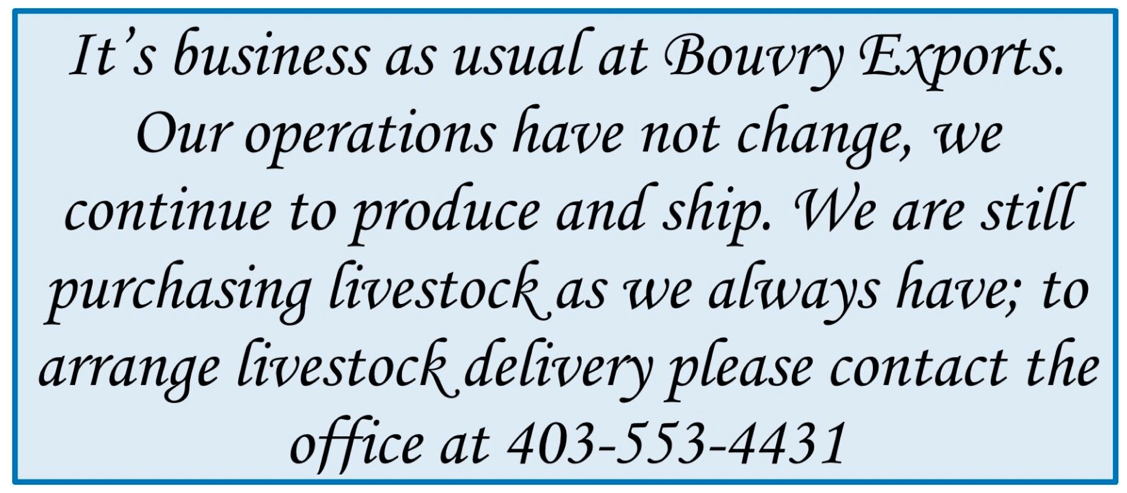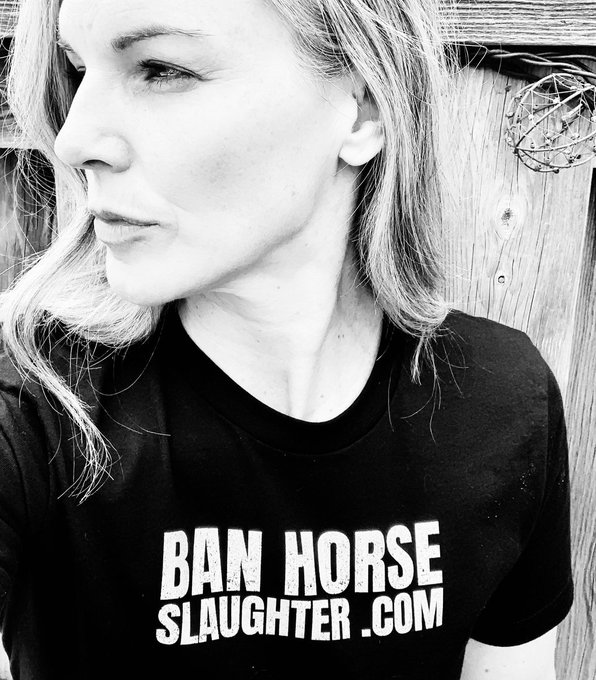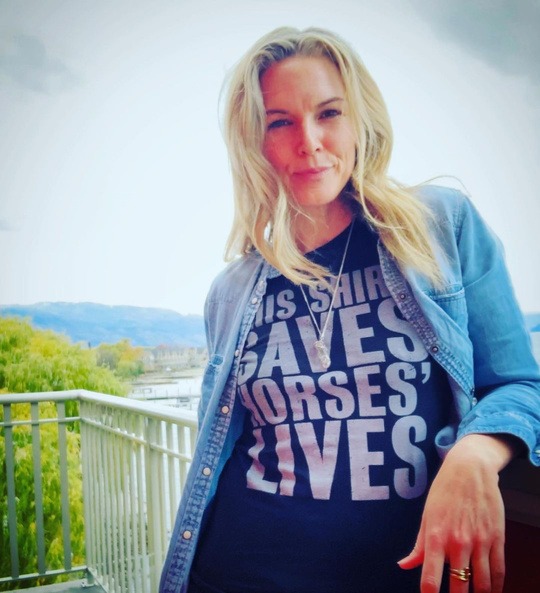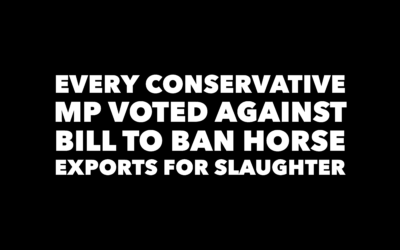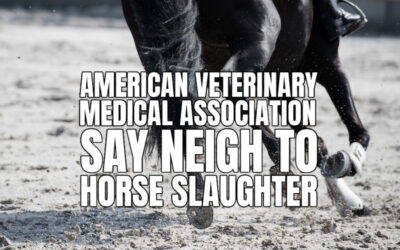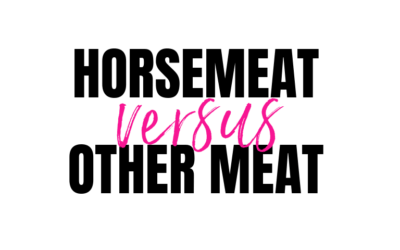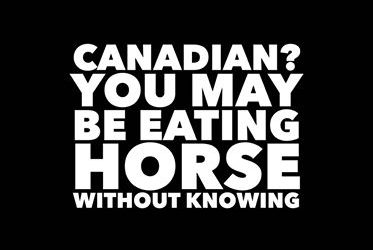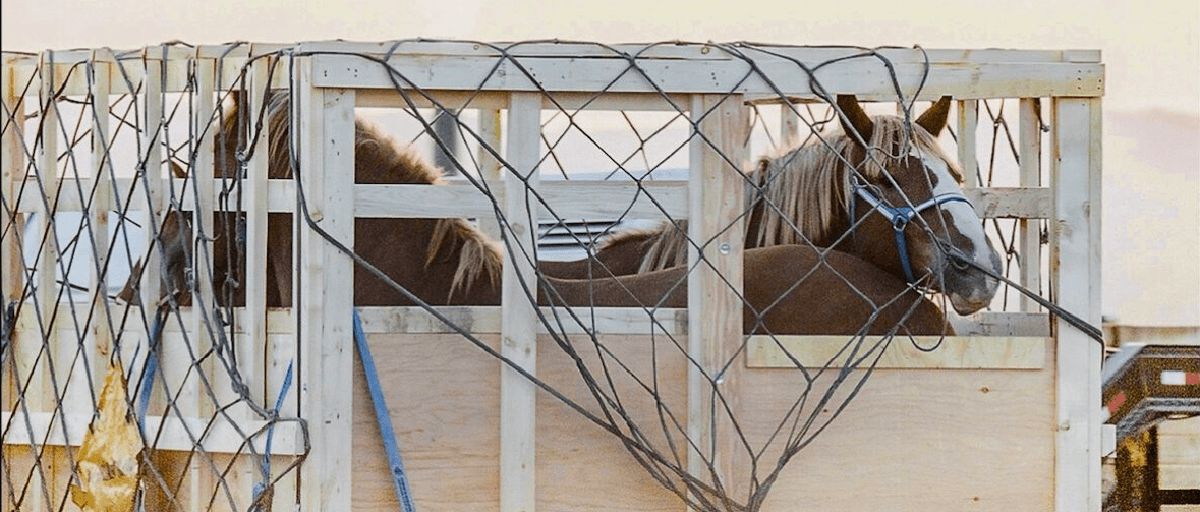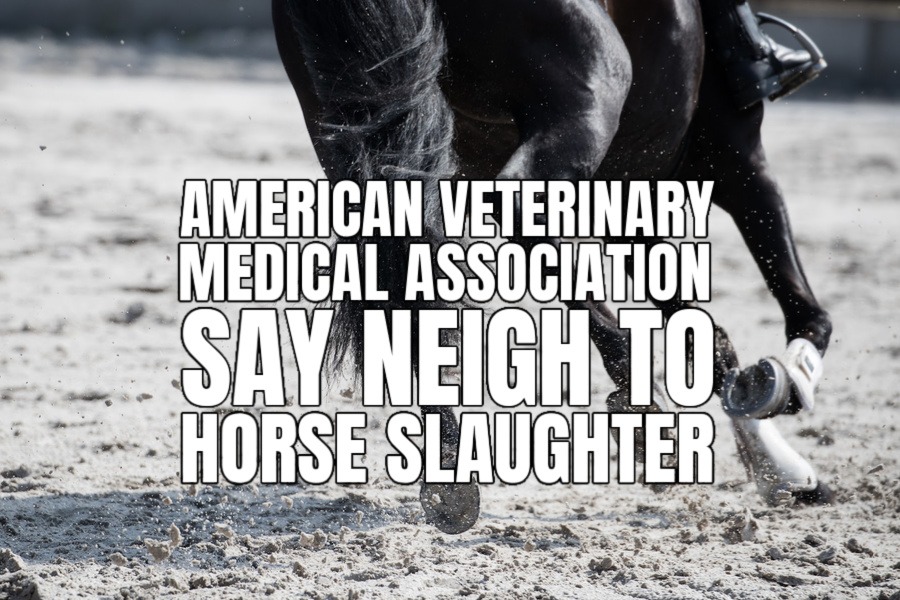IS BILL C-355 DEAD & WHAT'S NEXT?When Bill C-355 reached the Senate, Senator Pierre Dalphond stepped up as a powerful ally in the fight to end the live export of horses for slaughter. His support gave hope to thousands of Canadians who want to see this cruel...
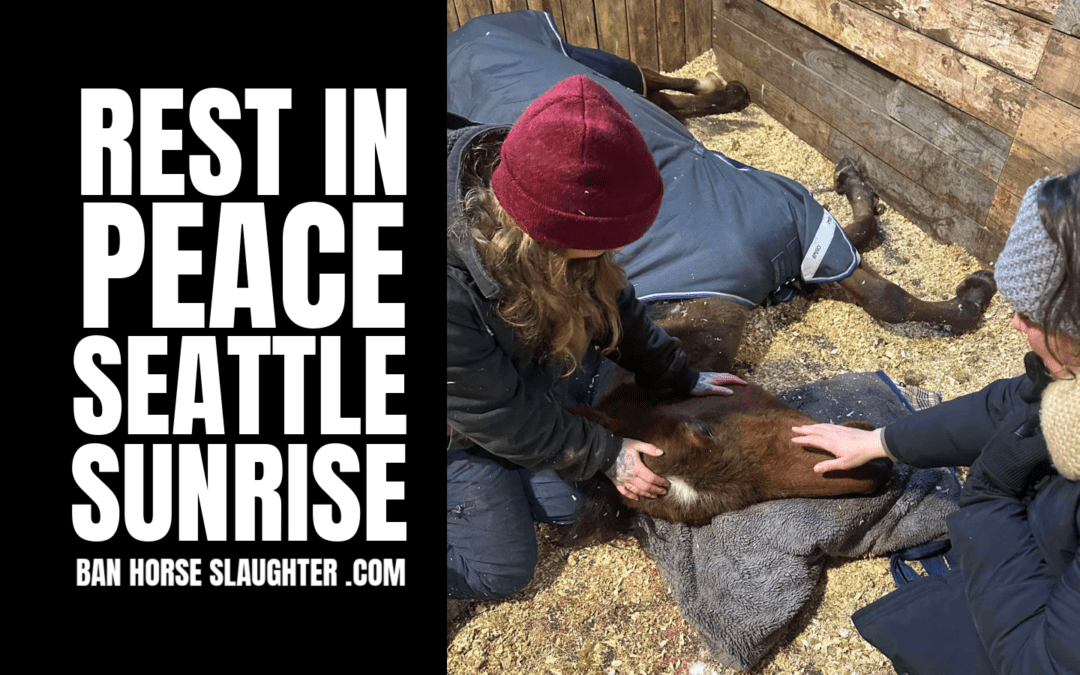
STEPHANIE REDLICK STARVED HORSE TO DEATH
STEPHANIE REDLICK – NEGLECTED HORSES?
YOU BE THE JUDGE
Updated: February 17, 2025
Thoroughbred Seattle Sunrise was purchased by Stephanie Redlick at an auction on November 28, 2024.
Born on February 15, 2020, he was in excellent condition at the time of purchase.
After just 10 weeks under Redlick’s so-called care, Seattle Sunrise was humanely euthanized this morning, February 17, 2025, following veterinary advice.
Seattle Sunrise was one of 20 horses owned by Stephanie Redlick. 16 remain in her ‘care’.
Recognizing his critical condition, Crystal Mitchell persuaded Redlick to relinquish him—along with three other horses—on February 6, 2025.
Documentation of his condition at the time of surrender is available here.
Immediately placed under the care of experienced equine veterinarians, Seattle Sunrise received a carefully planned and meticulously followed treatment protocol.
However, from the moment he arrived, Crystal, her family, and supporters were warned that the severe neglect he suffered under Stephanie Redlick might be too much for him to overcome.
We were told by our vet that we need to prepare ourselves because Seattle Sunrise – born Feb. 15, 2020 – might not recover from this.
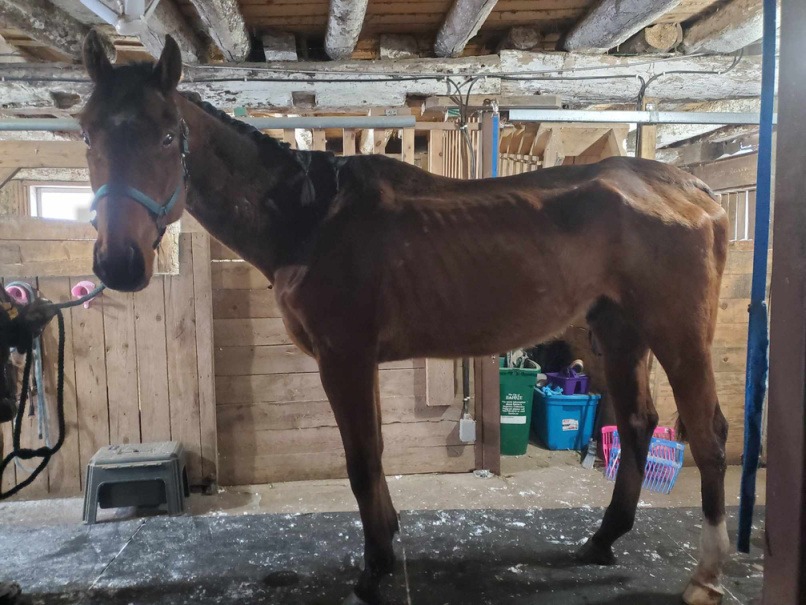
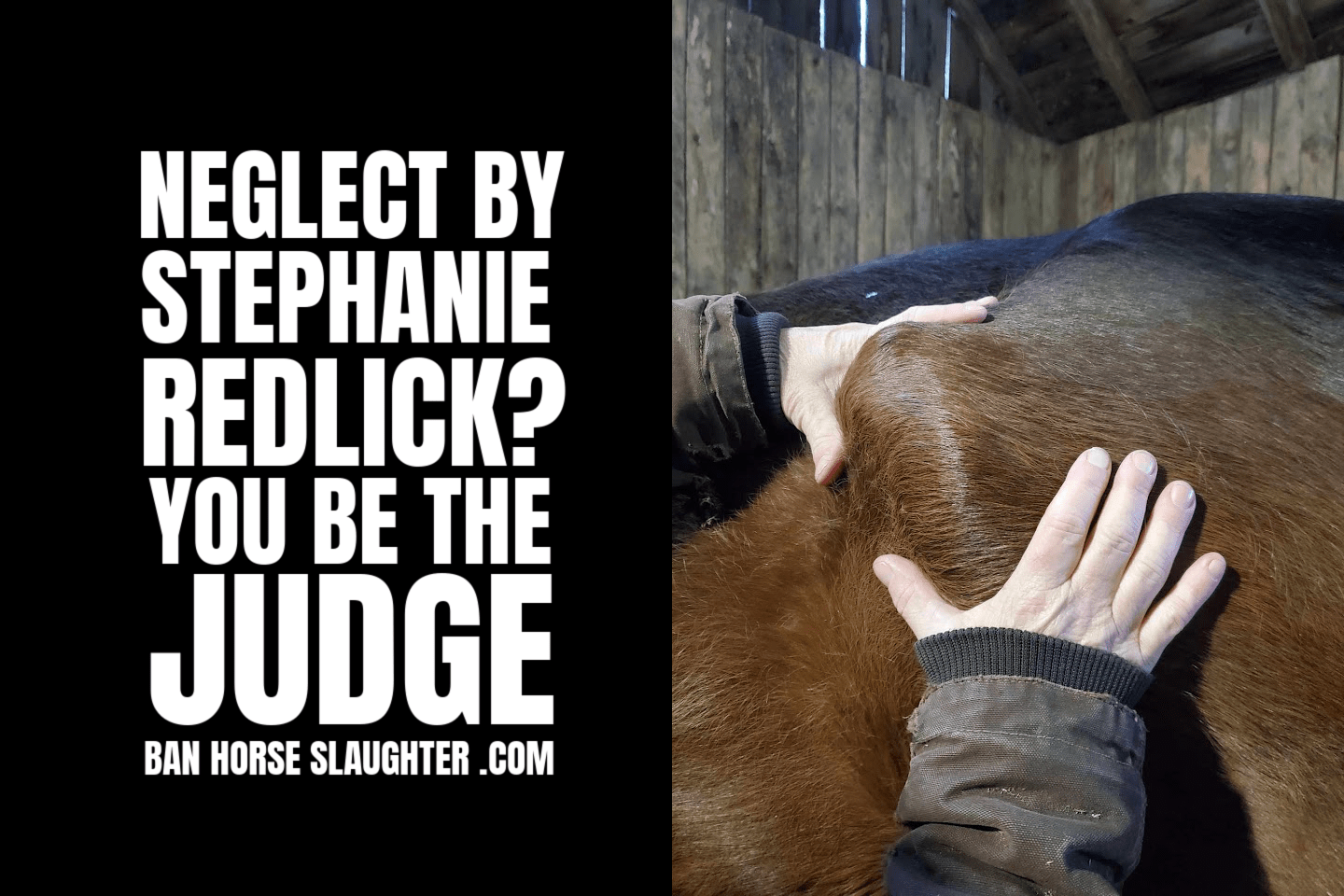
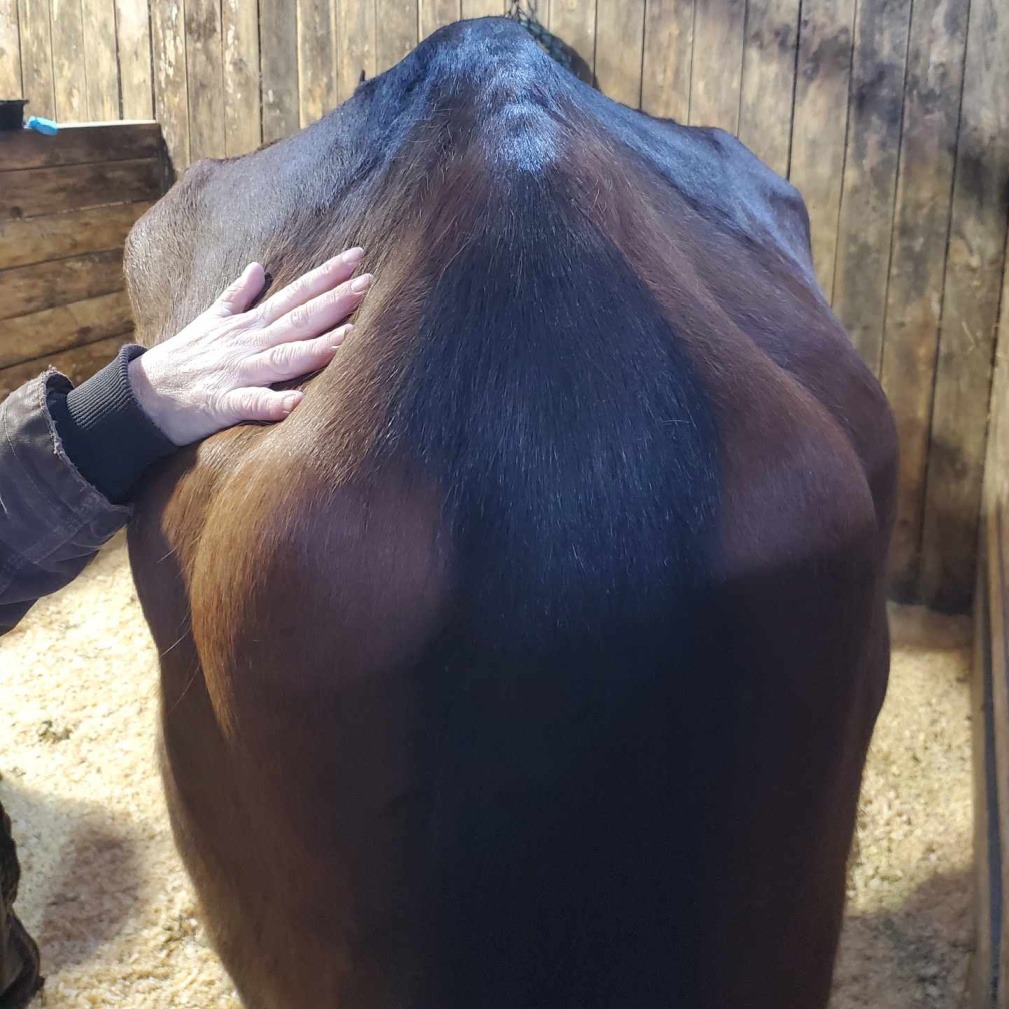
Rehabilitating a starved horse is a slow, delicate process that can take several months to over a year, depending on the severity of the malnutrition.
Proper refeeding must be gradual to avoid refeeding syndrome, and full recovery involves not just weight gain, but also rebuilding muscle, restoring organ function, and addressing emotional trauma.
Patience and careful management are key to successful rehabilitation.
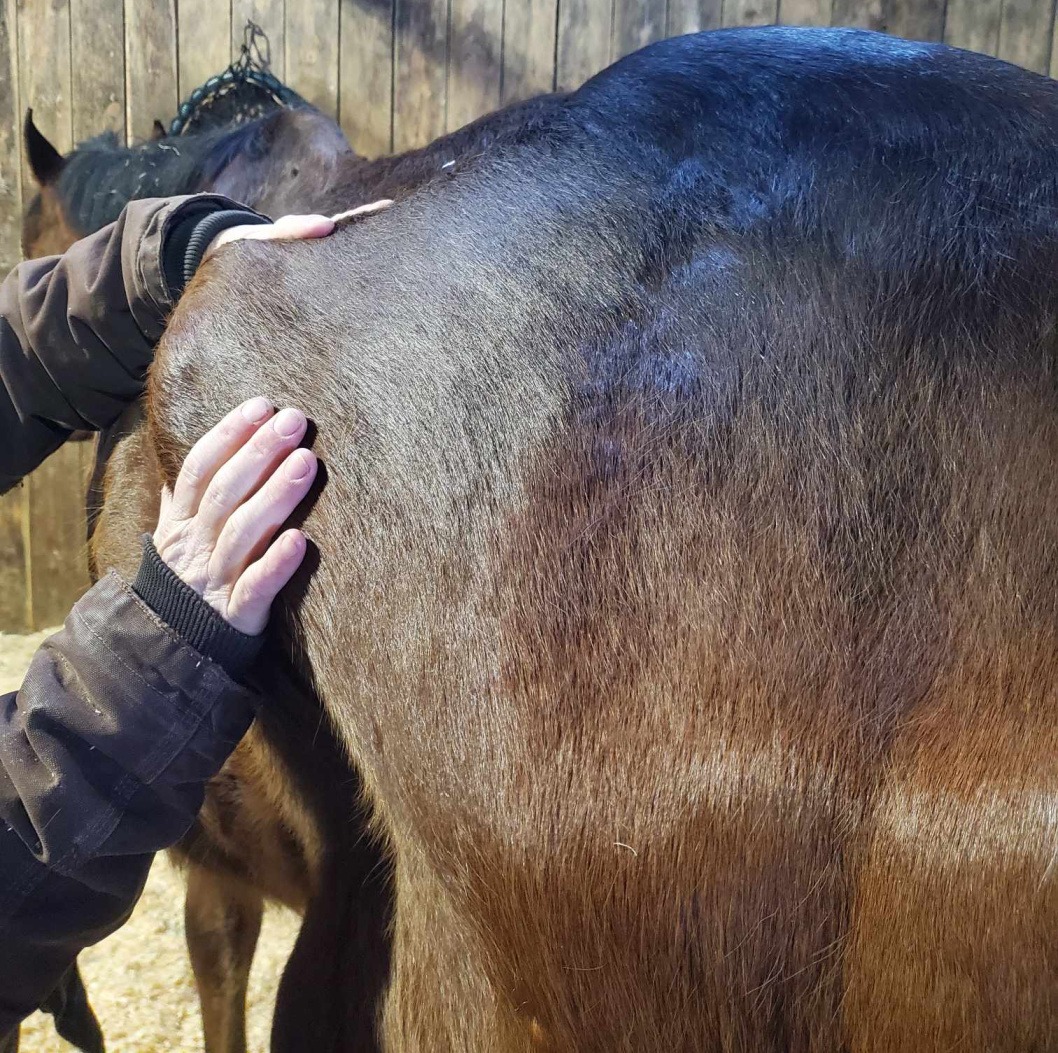
SUMMER SECORD WRITES:
Seattle Sunrise (thoroughbred / gelding / in bad shape / significantly underweight / needs to be in quarantine and food carefully monitored, fed slowly to avoid colic / needs and receiving antibiotics) *I have attached photos of him and the video removing his blanket.
Date of birth, February 15, 2020 – so he will be 5 years old.
All horses relinquished to us were very dehydrated.
———-
It appears Seatle Sunrise’s last race was August 11th, 2024 at Woodbine. He was sold at the CTHS auction lot 27 November 20th 2024. Auction video available here.
We brought him home Thursday Feb 6th, 2025 after being in Stephanie Redlick’s care on a property she leases at 248 6th line North Oro Medonte, Ontario, Canada. She has since moved her horses to Port Perry.
When he was relinquished to us his poor body condition was hidden under a ripped blanket.

THE LONG ROAD TO RECOVERY:
REHABILITATING STARVED HORSES
When horses suffer from starvation due to neglect, their recovery is a delicate, time-consuming process requiring expert care and unwavering patience.
Malnutrition doesn’t just strip away their body fat—it weakens their muscles, organs, and immune system, sometimes causing irreversible damage.
Rehabilitating these horses is a race against time, balancing their need for nourishment with the risks of refeeding too quickly.
Refeeding Syndrome.
One of the greatest challenges in helping a starved horse recover is avoiding refeeding syndrome.
After prolonged starvation, a horse’s body shifts into survival mode, breaking down fat and muscle for energy.
If they are suddenly given too much feed, especially rich grains or high-sugar foods, it can shock their system, leading to fatal imbalances in electrolytes. This is why their diet must be reintroduced slowly, beginning with small, frequent meals of easily digestible forage.
Physical and Emotional Trauma often go hand in hand.
Starved horses often suffer from more than just weight loss.
Their hooves may be overgrown and riddled with cracks, their teeth in poor condition, and their skin covered in sores or rain rot due to a weakened immune system.
Internally, their organs have likely suffered, making them prone to colic, infections, and metabolic disorders.
Additionally, the emotional toll of neglect can leave them anxious, fearful, or withdrawn, making trust-building a crucial part of their rehabilitation.
Rehab takes Months of Patience and Care.
It can take many months for a starved horse to regain a healthy body condition.
Even once they reach a normal weight, their muscle tone and stamina must be carefully rebuilt through controlled exercise.
Veterinary oversight, dental care, deworming, and balanced nutrition all play vital roles in their recovery.
And while some horses make full recoveries, others may never fully regain their former strength, especially if they were deprived for too long.
Rehabilitating a starved horse is a labour of love, requiring not just medical expertise but deep compassion. Every pound gained, every flicker of life returning to their eyes, is a victory. These horses are survivors, and with the right care, they can once again know what it means to be healthy, loved, and free from suffering.
This situation highlights both the cruelty some humans are capable of and the compassion of those who choose to step up, take action and show kindness.
We spoke with Summer (Mitchell) Secord and her mother, Crystal Mitchell after Jim Horne reached out to them regarding a lack of care that resulted in the death of a foal and the poor condition of horses in the 'care' of Stephanie Redlick - along with a lack of water and feed - he had seen. [Read about Jim's experience here.]
Stephanie Redlick relinquished 4 horses of 20 she owned and was holding on a leased property in Oro-Medonte, Ontario, Canada to Summer Secord and Crystal Mitchell. We are grateful that Summer, Crystal along with Celia Carletti have carefully documented what they witnessed at the property and the condition each of the horses were in when relinquished.
It's important to note that 16 horses remain in the 'care' of Stephanie Redlick. Please scroll down for how you can help remedy this situation.
Note: We originally posted that Redlick owned 17 horses, that number has been corrected to 20.

The team at https://horserescuefund.org has begun raising funds to support the Mitchell family in caring for the 4 emaciated horses they convinced Stephanie Redlick to relinquish.
[UPDATE Feb. 17, 2025: Despite a carefully planned and meticulously followed treatment protocol one of the four -- Seattle Sunrise -- was euthanized on the advice of a veterinarian.]
Providing these horses with veterinary care, prescriptions, specialized nutrition and farrier services has already been costly.
Horse Rescue Fund | 2467863 Alberta Society
is a registered foundation at the federal level with the
Canada Revenue Agency and as such, can issue receipts for donations.
You can confirm HRF's official status here.
Business/Registration number: 798022307 RR 0001
PLEASE HELP RAISE AWARENESS
Contact members of the press, especially those who have a history of writing about animal welfare-related cases. Share this link - https://banhorseslaughter.com/stephanie-redlick -- it's been set up specifically to not only raise funds but also awareness with the public and the press.
Share our posts and website on your social media accounts and forward emails. What's that? You're not on our email list? Scroll down.
Pictures and videos on this page are courtesy of Summer Secord, Crystal Mitchell and Celia Carletti.
Press contact: marie@banhorseslaughter.com or phone: 250 801 8231
YOU MAY ALSO BE INTERESTED IN...
THANK YOU SENATOR DALPHOND
BOUVRY FINED
JANUARY 6, 2025 BOUVRY FINED A "guilty plea of sorts" today for Bouvry. Instead of going through with scheduled court dates, Bouvry will pay... $17,000.00 in fines and surcharges. Plus a small fortune they would’ve likely dished out for Calgary counsel. January 6,...
URGENT: HELP SAVE 8 HORSES FROM SLAUGHTER
JAN. 18/25 UPDATE: THANKS TO YOUR HELP 16 HORSES ARE SAFE (2 NOW IN PERMANENT HOMES) BUT WITH YOUR HELP WE HAVE ROOM TO SAVE 4 MORE. BOUVRY IS SLAUGHTERING HORSESFirst, let's start with the fact that the Bouvry slaughter plant in Alberta is STILL slaughtering horses....
JOIN ACTOR KATE DRUMMOND &
HELP US SPREAD THE WORD
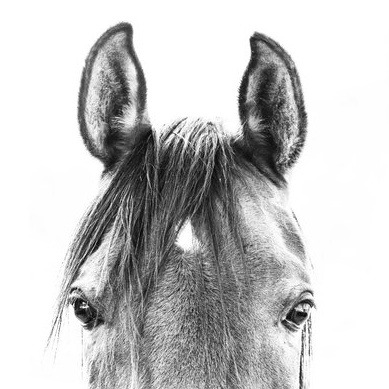
JOIN THE CAUSE. SUBSCRIBE TO OUR MAILING LIST.




